Prepare to be amazed and humbled as you journey into the incredible world of the Cu Chi Tunnels! More than just a historical site, the Cu Chi Tunnels offer a truly unique and eye-opening experience, taking you deep underground into a network of tunnels that played a pivotal role in Vietnam's history. Located just northwest of Ho Chi Minh City, these tunnels served as a vital base of operations for Viet Cong soldiers during the Vietnam War. Curious to explore this fascinating piece of history? This guide is your comprehensive companion to the Cu Chi Tunnels. We'll delve into their captivating story, prepare you for what to expect during your visit, provide all the practical information you need, and guide you through the best tour options. Get ready to discover the incredible Cu Chi Tunnels!
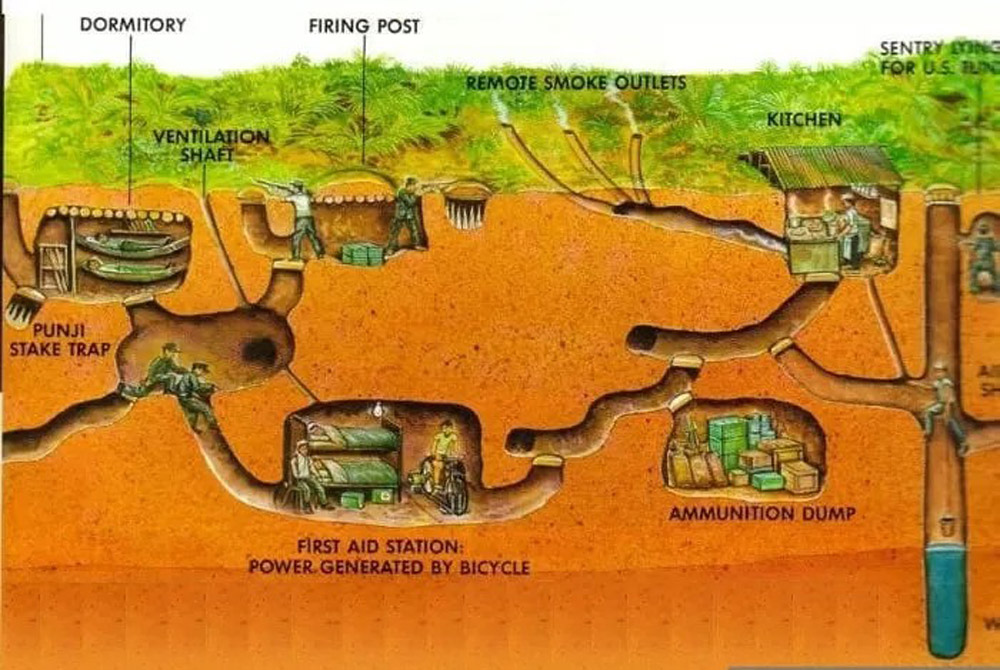
The Cu Chi Tunnels are far more than just a tourist attraction; they are a powerful symbol of resilience and ingenuity. To truly appreciate their significance, it's essential to understand what were the Cu Chi Tunnels used for. These tunnels weren't simply random holes in the ground; they were a meticulously crafted network of resistance, playing a crucial role in the history of Vietnam. Let's journey back in time to discover the remarkable story behind these underground labyrinths.
The story of the Cu Chi Tunnels begins not during the Vietnam War, but earlier, in the late 1940s during the fight against French colonial forces. Initially, local villagers started digging simple tunnels as hiding places from French soldiers. However, it was during the intense conflict of the Vietnam War (American War) in the 1960s that these tunnels underwent extensive expansion. As the conflict escalated, the Viet Cong, also known as the National Liberation Front, recognized the strategic potential of these underground networks and transformed them into a vast and complex system.
The strategic importance of the Cu Chi Tunnels for the Viet Cong cannot be overstated. These tunnels served as vital hiding spots during combat, offering refuge from bombing raids and ground sweeps. They also functioned as crucial communication and supply routes, allowing for the movement of troops and resources undetected by enemy forces. Deep within the earth, the tunnels provided space for hospitals to treat the wounded, living quarters for soldiers, and even bases for launching surprise attacks against unsuspecting enemy patrols and installations. The tunnels became a complete underground world, enabling the Viet Cong to effectively resist a far more powerful enemy. This explains clearly what is Cu Chi Tunnels used for.
Imagine life underground in the Cu Chi Tunnels. It was a world of unimaginable harsh conditions and challenges. Living and fighting in the tunnels meant enduring sweltering heat, stifling humidity, and a constant lack of fresh air and sunlight. Resources were scarce, and those within the tunnels faced daily struggles with limited food, water, and waste disposal. Despite these incredible hardships, the people living in the tunnels displayed remarkable ingenuity, developing ingenious methods to circulate air, cultivate hidden gardens, and manage the necessities of life in their subterranean world. Their resilience and determination in the face of such adversity is a testament to the human spirit.
Looking at Cu Chi Tunnels history, we can see a clear timeline of development. From their humble origins as simple village shelters in the 1940s, the tunnels began their initial expansion in the late 1950s as resistance against the Diem government grew. The 1960s marked a period of massive growth and sophistication, as the Viet Cong transformed the network into a complex military infrastructure. Throughout the Vietnam War, the tunnels were continuously used and defended, playing a critical role in the conflict. After the war, the Cu Chi Tunnels were preserved and opened to the public, becoming a poignant historical site that allows us to understand the past and remember the sacrifices made during this period of Vietnamese history.
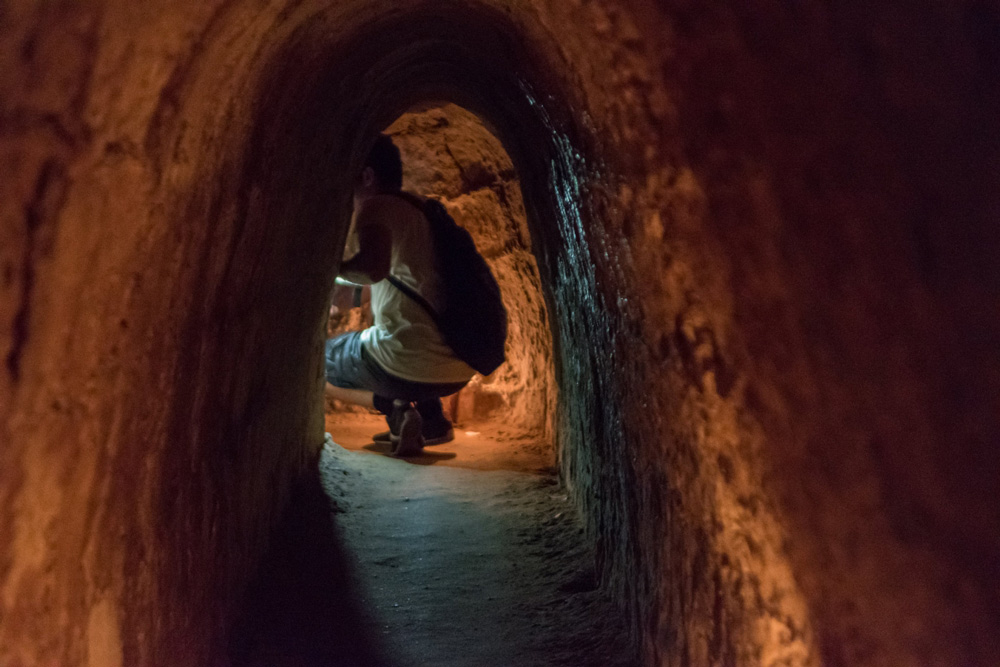
Venturing into the Cu Chi Tunnels, it's natural to wonder – how on earth did these underground networks, dug largely by hand, avoid collapsing? It's a testament to the remarkable engineering and ingenuity of the people who created them, using simple resources and clever techniques to build a surprisingly stable and enduring subterranean world. Let's explore the secrets behind the tunnels' structural integrity.
Nature played a crucial role in the tunnels' stability, thanks to the unique soil composition of the Cu Chi region. The area is characterized by laterite clay soil, a type of earth rich in iron and aluminum. This laterite clay, when exposed to air, hardens significantly, becoming almost like natural cement. This unique property of the laterite clay soil provided a naturally stable medium for digging tunnels, helping to prevent collapses and maintain the structural integrity of the underground network over time.
Beyond the favorable soil, the Viet Cong employed ingenious construction techniques to further ensure the tunnels' stability and functionality. They utilized a multi-level design, creating tunnels at varying depths, which not only added complexity to the network but also enhanced its structural support. Narrow passageways were deliberately dug, minimizing the amount of soil that needed to be supported and reducing the risk of cave-ins. Strategic entrances and exits were carefully planned, often angled or concealed to further reinforce tunnel sections. And in their construction, they cleverly used natural materials readily available in the area, such as bamboo and wood, to create simple but effective reinforcements and supports within the tunnels where needed.
While not directly related to structural integrity, camouflage and deception were essential elements of the tunnels' design that contributed to their overall survival. Tunnel entrances were cleverly concealed, often hidden beneath trapdoors disguised with leaves, termite mounds, or other natural elements, making them incredibly difficult to detect from above. This masterful camouflage not only protected the entrances from enemy discovery but also helped to maintain the element of surprise and security that was vital to the tunnels' function as a hidden resistance network.
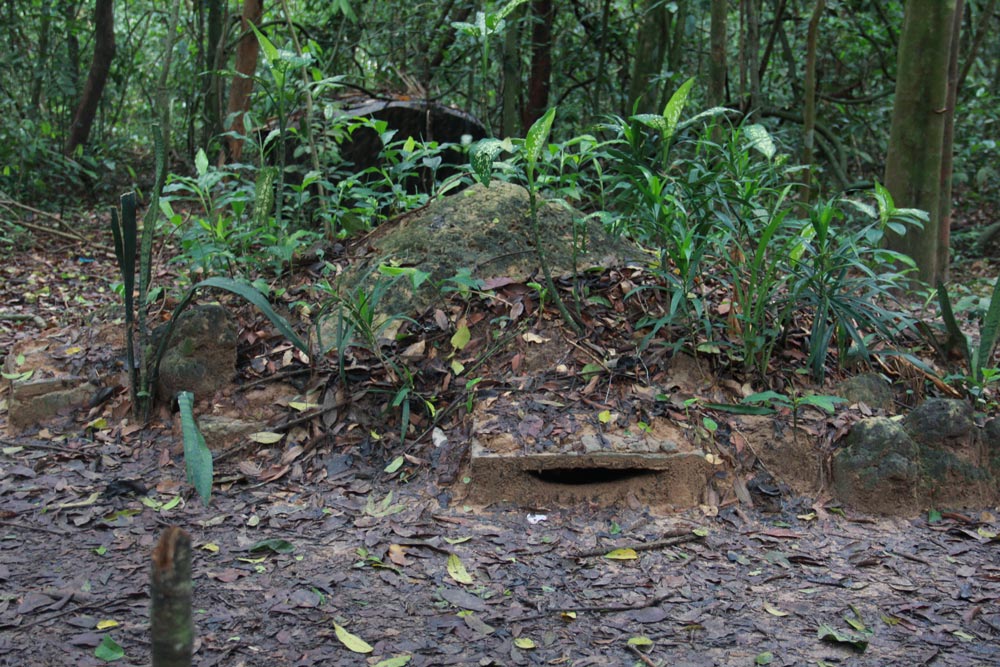
Embarking on a visit to the Cu Chi Tunnels is a truly unique and memorable experience, offering a powerful glimpse into Vietnam's wartime history. To help you plan your trip and know what to anticipate, let's walk through what you can expect when you explore these incredible underground networks. From choosing which site to visit to navigating the tunnels themselves, here's your guide to experiencing the Cu Chi Tunnels.
When planning your Cu Chi Tunnels visit, it's helpful to know that there are two main sections of the tunnels open to the public: Ben Dinh and Ben Duoc. Ben Dinh, being closer to Ho Chi Minh City, is often the more frequently visited site. It's also more developed for tourism, with certain sections of the tunnels enlarged slightly to make them a bit easier for visitors to navigate. For a less crowded and perhaps more authentic experience, consider Ben Duoc, which is located further from HCMC. Ben Duoc tends to be less touristy, and its tunnels are generally kept closer to their original size, offering a more realistic sense of the conditions faced by those who lived and fought underground. Choosing between Ben Dinh and Ben Duoc depends on your priorities – accessibility and convenience versus a more raw and less crowded experience.
Before you descend into the earth, both Ben Dinh and Ben Duoc sites feature fascinating above-ground exhibits that provide valuable context for your tunnel exploration. You'll find displays of weapons, from rifles and mines to booby traps, showcasing the types of armaments used during the conflict. Traps of various ingenious and often brutal designs are also on display, illustrating the defensive strategies employed in the tunnel systems. Artifacts recovered from the tunnels, such as clothing, tools, and everyday items, offer a glimpse into the daily life of those who inhabited this subterranean world. Many sites also offer documentary films or presentations, providing historical background and personal accounts that further enhance your understanding of the Cu Chi Tunnels and their significance.
The highlight of any visit to the Cu Chi Tunnels is the opportunity to actually enter the tunnels themselves and experience a section of this underground world firsthand. Be prepared to crawl – often on your hands and knees – through portions of the tunnel system. It's important to be aware that the spaces are confined, and it can get hot and humid underground. However, you are typically given the choice of how far you want to venture into the tunnels. Shorter, more easily accessible sections are usually available for those who are claustrophobic or have mobility concerns, while more adventurous visitors can opt for longer and more challenging crawls. Even a short time spent inside the tunnels provides a powerful sense of the conditions and challenges faced by those who lived and fought within them.
An element of the Cu Chi Tunnels experience that can be controversial is the presence of a shooting range at either Ben Dinh or Ben Duoc (or both). Here, for an additional fee, visitors have the option to fire period weapons, such as M16 rifles or AK-47s, on a firing range. While some visitors find this to be a visceral and impactful way to connect with the historical context, others find it jarring or inappropriate given the site's somber history. The shooting range is entirely optional, and whether or not to participate is a personal choice to consider as part of your visit.
To help you navigate the Cu Chi Tunnels sites and understand the layout, it's incredibly useful to have a Cu Chi Tunnels map. Many tour operators and the official sites themselves provide maps that illustrate the different areas, tunnel sections, exhibits, and key points of interest. Having a Cu Chi Tunnels map in hand will allow you to orient yourself, plan your route, and ensure you don't miss any aspects of the experience you're particularly interested in. Look for maps at the visitor centers or ask your tour guide for assistance in obtaining one to enhance your exploration.
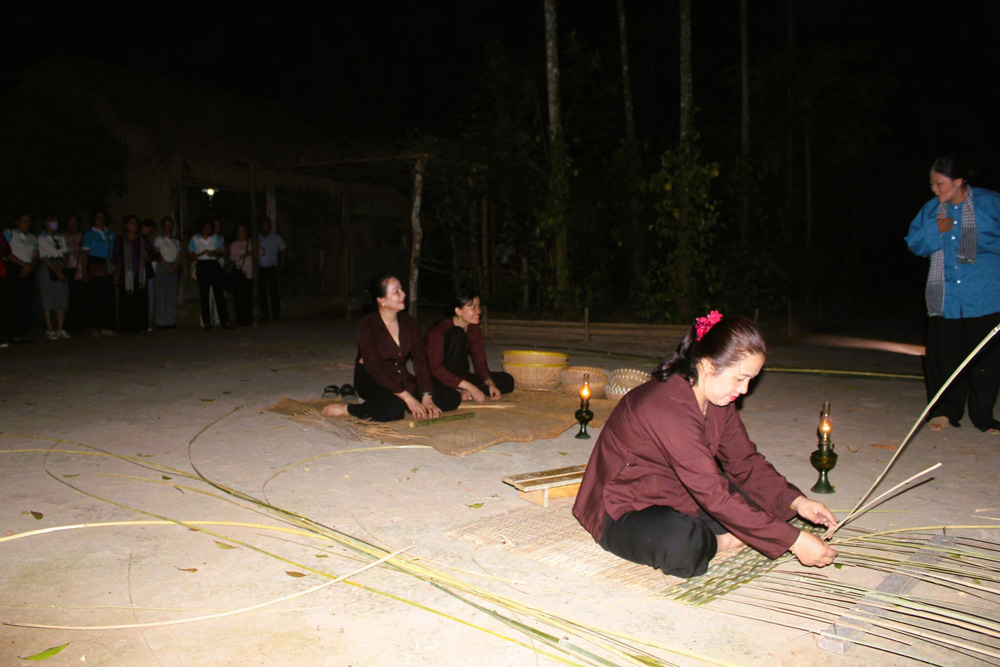
Ready to journey to the Cu Chi Tunnels? Excellent choice! To ensure your visit is seamless and stress-free, a little planning goes a long way. From figuring out the distance and travel time to understanding opening hours and entrance fees, we've compiled all the practical information you need to organize your Cu Chi Tunnels excursion.
If you're wondering how far is Cu Chi Tunnels from Ho Chi Minh, the answer depends on which site you plan to visit, Ben Dinh or Ben Duoc. Ben Dinh, the more popular site, is approximately 40-50 kilometers (25-31 miles) northwest of Ho Chi Minh City center. Travel time by car or taxi to Ben Dinh typically ranges from 1.5 to 2 hours, depending on traffic conditions. Ben Duoc, located further out, is roughly 70 kilometers (43 miles) from Ho Chi Minh City, and the journey can take around 2 to 2.5 hours. Factor these distances and travel times into your itinerary when planning your Cu Chi Tunnels trip from Ho Chi Minh.
Getting from the Cu Chi Tunnels to Ho Chi Minh City is relatively easy, with several transportation options to choose from. For budget-conscious travelers, local buses are an affordable option, although the journey can be longer and less direct. Taxis and ride-hailing apps offer a more comfortable and faster transfer, but will be pricier. Many visitors opt for motorbike taxis for a thrilling and uniquely Vietnamese experience, though be mindful of safety and negotiate the price beforehand. Another popular and convenient choice is to join an organized tour from Ho Chi Minh City, which typically includes transportation, entrance fees, and a guided tour of the tunnels, making for a hassle-free experience.
Planning your visit around the Cu Chi Tunnels opening hours is important to avoid disappointment. Both Ben Dinh and Ben Duoc sites generally operate daily from 7:00 AM to 5:00 PM. These Cu Chi Tunnels opening hours allow ample time for a visit, even if you travel from Ho Chi Minh City and back in a single day. However, it's always recommended to double-check the opening hours with the official websites or your tour operator, especially during holidays or special occasions, to ensure there are no unexpected changes.
Thinking about the cost of entry? Let's talk about the Cu Chi Tunnels entrance fee. The entrance fees can vary slightly between the Ben Dinh and Ben Duoc sites and can be subject to change, so it's always best to confirm current prices when planning your visit. Generally, you can expect the Cu Chi Tunnels entrance fee to be in the range of VND 125,000 to VND 155,000 (approximately USD 5 to USD 7) per person for either site. Keep in mind that this entrance fee typically covers general admission to the site and access to the above-ground exhibits and tunnel areas. Additional activities, such as the shooting range, usually incur separate charges. For the most up-to-date and accurate pricing, it's advisable to check official tourism websites or inquire with tour operators when booking your How much is entry to Cu Chi Tunnels experience.
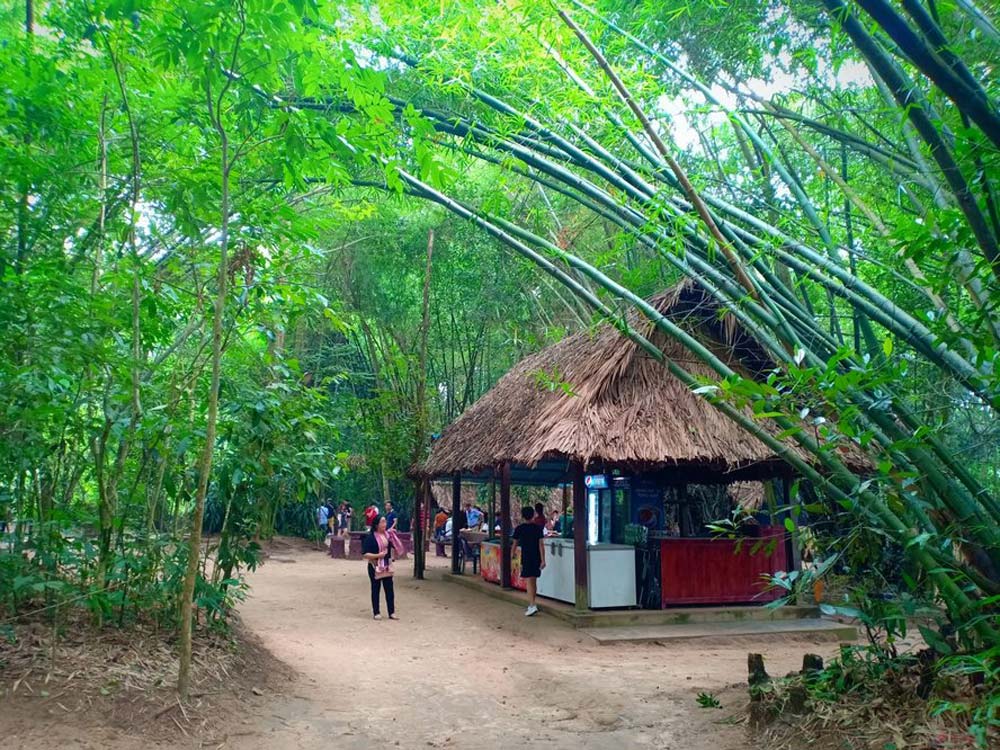
Planning your Cu Chi Tunnels adventure? One of the first decisions you'll face is whether to join an organized Cu Chi Tunnels tour or explore independently. Both options offer unique advantages, and the best choice really depends on your travel style, budget, and desired level of immersion. Let's weigh the pros and cons of guided tours versus independent exploration to help you decide which path is right for your Cu Chi Tunnels experience.
For many visitors, opting for an organized Cu Chi Tunnels tour from Ho Chi Minh City is the most convenient and hassle-free way to explore this historical site. The advantages are numerous! Firstly, convenient transportation is a major perk – tours typically handle all the logistics of getting you to and from the tunnels in comfortable vehicles, saving you the stress of navigating public transport or arranging taxis. Secondly, you'll benefit from a knowledgeable guide who will provide invaluable historical context and insights throughout your visit, enriching your understanding of the tunnels and the Vietnam War. Many tours also include lunch or snacks, further simplifying your day trip. When choosing a tour operator, look for reputable companies like "Sinh Tourist" or "Fiditourist," known for their experienced guides and reliable services. As for Cu Chi Tunnel tour price, you can generally expect to pay somewhere in the range of USD 25 to USD 50 per person, depending on the tour duration, inclusions, and operator.
For the more adventurous and independent traveler, visiting the tunnels on your own is definitely possible. Independent visit options include taking a local bus from Ho Chi Minh City, which is the most budget-friendly choice, or renting a motorbike or taxi for more flexibility. The pros of an independent visit are greater freedom to explore at your own pace and potentially save some money on tour costs. However, the cons include the need to navigate public transportation or traffic yourself, and you'll miss out on the in-depth historical explanations and insights provided by a guided Cu Chi Tunnels tour. If you choose to go it alone, be sure to do some research beforehand, download offline maps, and be prepared for a more self-directed and potentially less informative experience compared to a guided tour.
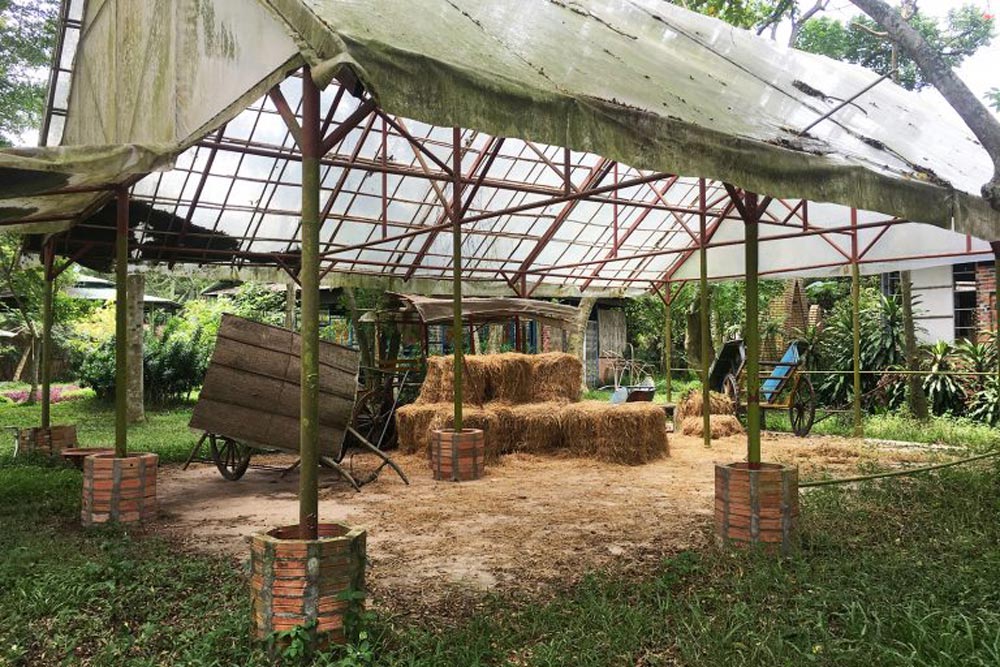
The Cu Chi Tunnels are undoubtedly a significant landmark in Vietnam, but are they a must-see for every traveler? The answer, like many travel decisions, depends on your interests and what you hope to gain from the experience. To help you decide if a journey underground is right for you, let's take a balanced look at what the Cu Chi Tunnels offer and some factors to consider before you go.
If you're fascinated by history, particularly the Vietnam War (or American War, as it's known here), then the Cu Chi Tunnels are an absolute must-visit. These tunnels are steeped in historical significance, serving as a crucial element in the Viet Cong's resistance against a far more powerful military force. Walking through the Cu Chi Tunnels and learning about their strategic importance, the daily life within them, and the ingenious strategies employed offers an unparalleled opportunity to connect with a pivotal period in Vietnamese history. For history buffs, the Cu Chi Tunnels are more than just a tourist site; they are a tangible link to the past, bringing history to life in a truly impactful way.
Beyond the history, a visit to the Cu Chi Tunnels offers a truly unique experience unlike any other. The chance to crawl through sections of the tunnels, even those enlarged for tourists, provides a firsthand understanding of the incredibly confined and challenging conditions endured by those who lived and fought within this subterranean world. It's a visceral and unforgettable way to grasp the realities of tunnel warfare and appreciate the resilience and determination of the people who utilized these networks. For travelers seeking experiences that go beyond the typical sightseeing and offer a deeper, more immersive understanding of a place and its past, the Cu Chi Tunnels deliver in a powerful and memorable way.
However, it's important to be aware of certain considerations before planning your Cu Chi Tunnels visit. Firstly, the tunnels are, by their nature, claustrophobic. Even in enlarged sections, the spaces are tight, and those who are uncomfortable in confined spaces might find the experience challenging. Secondly, especially at the Ben Dinh site, there is a degree of commercialization. While efforts are made to preserve the historical aspects, souvenir shops and tourist facilities are present. Finally, the shooting range, offered at some sites, raises ethical considerations for some visitors. The sound of gunfire can be jarring within a historical site of conflict, and participating in this activity may not align with everyone's sensitivities.
So, are the Cu Chi Tunnels worth visiting? For many, the answer is a resounding yes. If you are a history enthusiast, crave unique and immersive experiences, and are prepared for the physical and potentially emotional aspects of the site, then a visit to the Cu Chi Tunnels is highly recommended. It's an opportunity to learn, reflect, and gain a deeper appreciation for Vietnamese history and human resilience. However, if you are strongly claustrophobic, sensitive to commercialization at historical sites, or uncomfortable with the idea of a shooting range within such a location, then perhaps other historical sites in Vietnam might be a better fit for your interests and sensitivities. Ultimately, the decision is personal, but hopefully, this balanced perspective helps you determine if the Cu Chi Tunnels are the right destination for your journey.
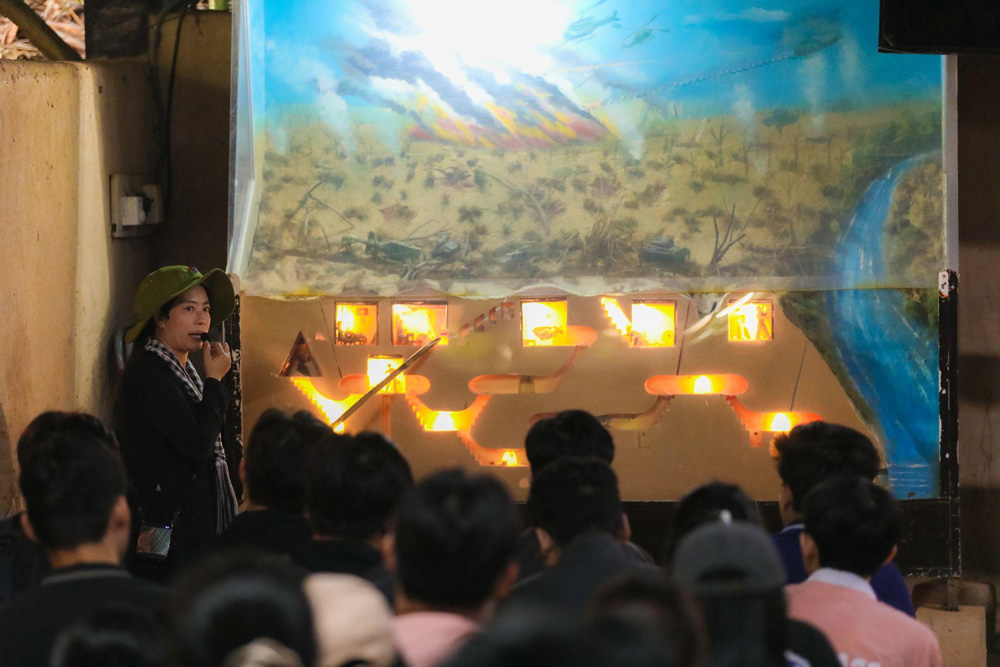
To transform your trip to the Cu Chi Tunnels from just sightseeing into a truly meaningful and impactful experience, a few thoughtful considerations can make all the difference. By being prepared, respectful, and mindful, you can connect with the history and significance of this site on a deeper level. Here are some key tips to enhance your Cu Chi Tunnels journey.
One of the first steps to a meaningful visit is to choose the right site for you – Ben Dinh or Ben Duoc. If you prefer a more easily accessible and tourist-oriented experience, with slightly larger tunnel sections, Ben Dinh might be a better fit. It's closer to Ho Chi Minh City and offers a well-developed visitor infrastructure. However, if you're seeking a less crowded, more authentic, and perhaps more challenging experience, with tunnels closer to their original dimensions, Ben Duoc is the recommended choice. Consider your personal preferences and what kind of atmosphere you're hoping for when deciding which of these Cu Chi Tunnel sites to explore.
Comfort is paramount when visiting the Cu Chi Tunnels, so dress appropriately for the conditions. Opt for comfortable clothing that you don't mind getting a little dusty or dirty, as you will be exploring both above and below ground. Essential comfortable shoes are a must, sturdy sneakers or walking sandals are ideal, as you'll be doing a fair amount of walking over uneven terrain and potentially crawling through tunnel sections. Lightweight, breathable fabrics are recommended to combat the Vietnamese heat and humidity, especially when you're underground.
Staying hydrated is crucial, especially when exploring the Cu Chi Tunnels, so bring water – and bring plenty! The Vietnamese climate can be hot and humid, and even underground, the tunnels can feel warm and stuffy. Carrying a water bottle with you is essential to stay refreshed and comfortable throughout your visit, particularly if you plan to do any tunnel crawling or extensive walking around the site. Staying well-hydrated will help you feel your best and fully appreciate the experience.
It's vital to be prepared for confined spaces when visiting the Cu Chi Tunnels. The tunnels were designed to be narrow and restrictive, and while some sections have been widened for tourists, they are still undeniably small. If you know you experience claustrophobia, or have a strong aversion to tight spaces, be aware that entering the tunnels might be challenging. However, remember that you are usually given the option to explore only the more accessible sections, and you can always choose to exit the tunnels if you feel uncomfortable. Knowing what to expect and being prepared mentally for the confined environment will help you manage any potential anxieties.
Above all, approach your visit to the Cu Chi Tunnels with respect for the history of this site. Remember that this is not just a tourist attraction; it's a place of significant historical importance, representing a period of intense conflict and immense sacrifice in Vietnamese history. Be mindful of the site's somber past, and engage with the exhibits and tunnel experience with sensitivity. Taking a moment for quiet reflection and contemplation as you explore the tunnels can deepen your understanding and appreciation of the site's profound meaning.
To make the most of your day trip from Ho Chi Minh City, consider combining your visit to the Cu Chi Tunnels with other nearby attractions. A popular and rewarding option is to include a stop at the Cao Dai Temple in Tay Ninh. This unique and colorful temple, the center of the Cao Dai religion, offers a fascinating cultural contrast to the historical focus of the tunnels. Combining these two destinations into a single day trip provides a richer and more diverse experience of the region beyond Ho Chi Minh City, allowing you to see both historical and cultural highlights in one outing.
Stepping into the Cu Chi Tunnels is more than just descending underground; it's a journey into the heart of Vietnamese resilience and a powerful encounter with history. These tunnels stand as a remarkable testament to human ingenuity and determination in the face of adversity, offering a truly unique experience that resonates long after you emerge back into the sunlight. For anyone seeking a deeper understanding of Vietnam's past and a thought-provoking glimpse into the realities of wartime, a visit to the Cu Chi Tunnels is an absolute must.
Inspired to explore Vietnam's historical depths and cultural richness? Let Asia Mystika be your guide! Discover Vietnam tour packages designed for the discerning traveler, offering tailor-made journeys crafted by local experts you can trust, all while ensuring exceptional value for your money. Have you ventured into the Cu Chi Tunnels yourself? Or are you now considering adding this poignant site to your Vietnam itinerary? Share your thoughts and questions in the comments below – we're eager to hear from you and help you plan your unforgettable Vietnamese adventure!